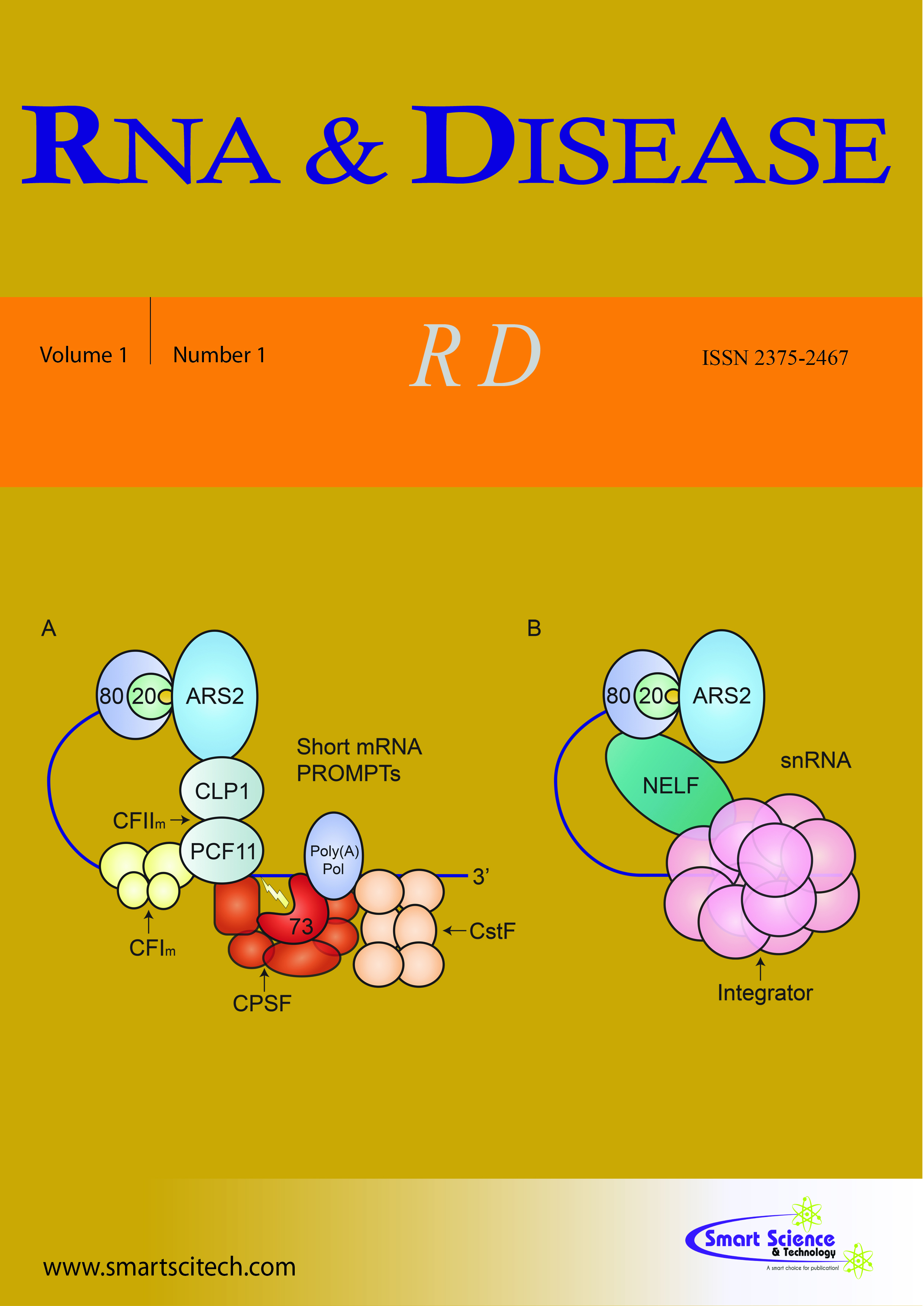microRNA-124: A promising therapeutic agent for various human diseases, including rheumatoid arthritis
DOI: 10.14800/rd.1252
Abstract
microRNAs (miRNAs) are non-coding RNAs, approximately 22 nucleotides in length, that act as post-transcriptional regulators. Thousands of miRNAs have been identified in animals, and they are well conserved across species. MicroRNAs play essential regulatory roles in cellular processes, and changes in miRNA expression are associated with human diseases.
Originally, miR-124 was identified as a brain-enriched miRNA and shown to be involved in brain and neuronal development. MiR-124 has since been reported to be expressed in other organs and to be involved in various biological phenomena. MiRNA-124 plays roles in various pathologic conditions, including cancers, acute stress, cardiovascular disorders, inflammatory responses, chronic pain, and osteoclast differentiation. MiR-124 has also been shown to suppress various tumor functions, including proliferation, activation, survival, invasion, metastasis, and migration. Rheumatoid arthritis (RA) is a chronic auto-inflammatory disorder of unknown etiology, whose treatment has been significantly improved by the advent of biological drugs. Even so, some RA patients show little or no response to these therapies, suggesting the need for additional treatments.
In a study comparing miRNA expression in RA and osteoarthritis (OA) fibroblast-like synoviocytes (FLS), we found that miR-124a was the only miRNA whose expression was lower in RA than in OA FLS.MiR-124a was found to directly downregulate the production of CDK-2 and MCP-1. In the rat adjuvant-induced arthritis (AIA) model, a single injection of pre-miR-124 into one ankle joint suppressed joint swelling in all of the limbs. Histological examination showed that AIA rats treated with pre-miR-124 exhibited reduced synoviocyte proliferation, less leucocyte infiltration into synovial tissue, and less cartilage and bone destruction than untreated AIA rats. The joints of the pre-miR-124-treated AIA rats also showed reduced osteoclast numbers and reduced RANKL, integrin ?1 (ITGB1), and NFATc1 expression levels. MiR-124 was shown to directly target the 3’UTRs of the rat NFATc1, ITGB1, SP1, and CEBP? mRNAs. Both miR-124 and miR-124a were also found to directly target human NFATc1 mRNA and to suppress the differentiation of human osteoclasts from monocytes.
Taken together, recent studies suggest that MiR-124 may be a promising therapeutic agent for RA and other diseases.











